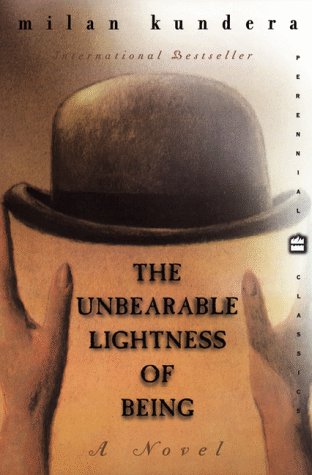


Character Keywords |
Tomaslightness, weight |
Terezabody, soul, vertigo, weakness, idyll, Paradise |
Sabinawoman, light, strength |
Franzbetrayal, parades |
family |
son (11) |
|
grandfather |
|
lightness |
weight/lightness (28, 30, 31, 33) |
heavy (10) |
lightness |
|
body/mind |
singularity (8, 11) |
|
dis-play (28) |
|
love |
fear + desire of (12, 13, 21) |
fidelity (58) |
betrayal |
|
profession |
surgeon (35) |
Photographer / journalist (25) |
artist (22) |
|
sleep |
alone or with Tereza |
heavy: dreams (16, 18) |
stage |
|